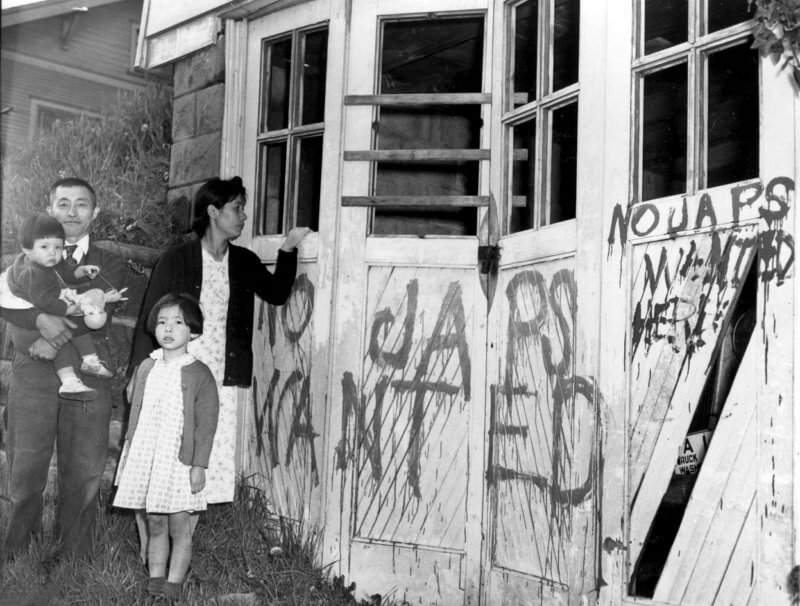

I’m the chair of the editorial board of Pacific Citizen, the national newspaper of the JACL. Below is my column in the New Year’s issue of the PC. I wanted to post it here and also add even more current concerns given President Trump’s rocky first three weeks, his eyebrow-raising relationships with world leaders (including Japan’s Shinzo Abe, which merits a separate blog post), the currently on-hold Muslim travel ban, and the wild ride of national security issues climaxing — with possibly more climaxes to come — in the resignation of Trump’s National Security Adviser. On top of all the political insanity in a dangerous and shifting world, racism and prejudice still loom large, not just against African Americans, Latinos, Muslims and Jews but also against Asians in America.
The photos at the top are mirror images of anti-Asian ignorance. The first is from a news story today about racist graffiti on the Minneapolis home of a Hmong American family; the other is a very similar message on a Japanese American family’s home 75 years ago. This year we mark the 75th anniversary of the signing of Executive Order 9066. We need to think about that document’s impact on America, and hope we don’t make the same mistake today.
Here’s my column:
Continue reading





 There are a lot of hinky elements to this story. The family claims the
There are a lot of hinky elements to this story. The family claims the  A couple of months ago, when Erin gave a training workshop for young Asian Americans at the
A couple of months ago, when Erin gave a training workshop for young Asian Americans at the 






